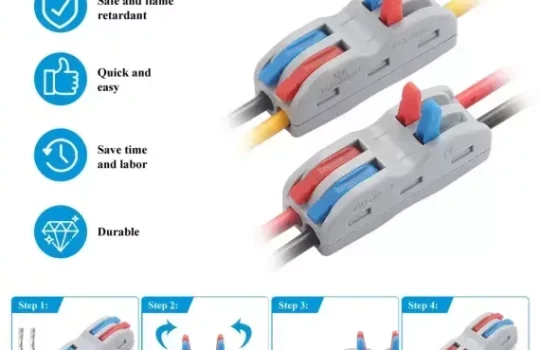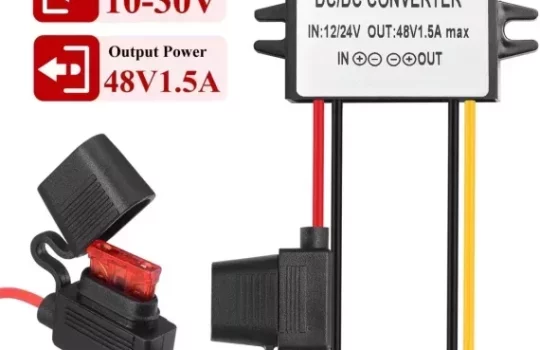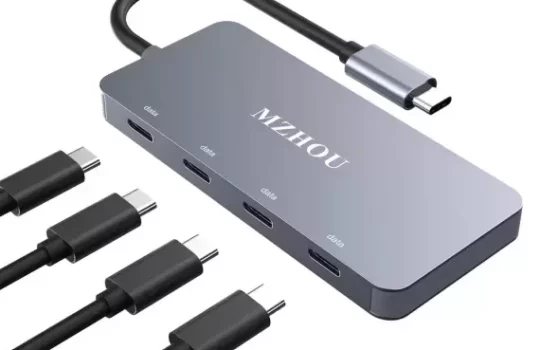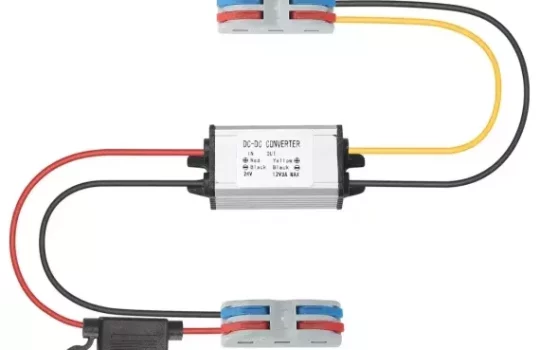Stepping up a 12V DC power source to 24V DC is a common requirement in various electrical and electronic applications. Whether it’s for industrial systems, automotive electronics, or renewable energy systems, the ability to efficiently convert one DC voltage level to another is essential. This article delves into the methods, components, and considerations involved in stepping up 12V DC to 24V DC.
Understanding the Concept of Voltage Conversion
Voltage conversion refers to the process of changing the level of voltage in a power supply system without changing the overall power (unless specified by the efficiency losses). In this case, stepping up means increasing the voltage from 12V to 24V DC. This can be accomplished through several methods, with the most common one being a DC-DC converter, particularly a boost converter. To understand how to step up voltage from 12V to 24V, it’s necessary to understand the key principles behind voltage regulation, types of converters, and how they are applied.

Boost Converter: The Most Common Solution
A boost converter is the most widely used circuit for stepping up a DC voltage. It is a type of switching power supply that uses inductors, capacitors, and switches to increase the input voltage to a higher output voltage. The boost converter operates by storing energy in an inductor and releasing it at a higher voltage. Here’s how it works:
- Inductor Charging: When the switch is closed, current flows through the inductor, building up energy in the form of a magnetic field.
- Inductor Discharging: When the switch opens, the energy stored in the inductor is released and transferred to the output capacitor, raising the voltage.
- Voltage Regulation: The duty cycle (the percentage of time the switch is closed) is controlled to regulate the output voltage. By adjusting the duty cycle, the output voltage can be stepped up from the 12V input to the desired 24V output.
The efficiency of a boost converter is typically high, often exceeding 90%, making it suitable for applications where power efficiency is crucial, such as in battery-powered systems and renewable energy applications.

Key Components of a Boost Converter
To design or select a boost converter for stepping up 12V to 24V, several key components are necessary. These include:
- Inductor: An inductor is used to store energy. The size and inductance value must be carefully selected to ensure proper energy storage and efficient conversion.
- Switch (Transistor): A switch (typically a MOSFET) rapidly opens and closes to control the energy flow through the inductor. The switching frequency is crucial for the converter’s performance.
- Diode: A fast recovery diode is used to ensure that the energy flows correctly from the inductor to the output capacitor.
- Capacitors: Output and input capacitors smooth out the fluctuations in the output voltage and help filter out any high-frequency noise caused by the switching action.
- Controller: A control IC or pulse-width modulation (PWM) controller regulates the duty cycle of the switch to maintain a stable output voltage, even as the input voltage or load conditions vary.
The Role of Efficiency in Voltage Step-Up
Efficiency is a critical factor when selecting or designing a converter for stepping up voltage. For example, in battery-operated systems, such as electric vehicles or renewable energy systems, the energy lost in conversion directly impacts the system’s performance and operational time. Boost converters can operate with efficiencies of up to 95%, depending on the design and components used.
However, there are trade-offs between the components’ size, cost, and efficiency. For instance, while using high-quality components such as low-resistance inductors or high-speed diodes can boost efficiency, it might also increase the overall cost and size of the converter. Balancing these factors is crucial when designing or selecting a 12V to 24V step-up converter.

Applications of 12V to 24V DC Conversion
Stepping up voltage from 12V to 24V DC is common in several fields. Some applications include:
- Automotive and Electric Vehicles: In electric vehicle systems, 12V DC is commonly used in various subsystems (e.g., lights, sensors, entertainment systems). However, certain high-power systems (such as motors or electric actuators) require 24V DC for better performance. A DC-DC converter is used to step up the 12V power supply to 24V efficiently.
- Industrial Equipment: Industrial systems often require different voltage levels for various operations. For instance, a machine may operate with a 24V control system but be powered by a 12V source, necessitating the use of a boost converter.
- Renewable Energy Systems: In solar power systems, 12V battery banks are commonly used to store energy. However, certain devices or inverters may require a 24V input. A boost converter can step up the voltage from 12V to 24V for compatibility with the required equipment.
- Telecommunications: Certain communication equipment, such as radios or base stations, often requires stable 24V DC power. A boost converter can efficiently step up the 12V DC from an existing power supply to meet this requirement.
Considerations for Choosing a 12V to 24V Step-Up Converter
When selecting a boost converter for stepping up 12V to 24V, several factors should be considered:
- Power Rating: The converter should be able to handle the maximum power requirement of the load. Power is calculated by multiplying the output voltage (24V) by the current required by the load. Ensure that the converter can supply this amount of power at the required efficiency.
- Input Voltage Range: The input voltage should remain within the operating range of the boost converter. Although a 12V nominal input is typical, the converter should be able to operate effectively even if the input voltage fluctuates, such as in a vehicle where the voltage may range from 11V to 15V.
- Output Voltage Regulation: Ensure that the converter can provide a stable 24V output under varying load conditions. Voltage regulation ensures that the output remains constant, even when the load current fluctuates.
- Efficiency: As mentioned earlier, efficiency is crucial to reduce energy losses. Higher efficiency means less heat generation and longer operational life for components. Look for converters with high efficiency (typically greater than 85%).
- Size and Form Factor: Depending on the application, the physical size of the converter might be a significant consideration. In compact systems like electric vehicles, small, lightweight converters are preferred.
- Protection Features: Ensure that the converter has built-in protection against short circuits, over-voltage, over-current, and thermal overload. These features help protect both the converter and the connected load from damage due to abnormal operating conditions.
- Cost vs. Performance: High-quality components and designs typically result in higher cost. However, balancing performance and cost is essential for cost-effective and reliable operation in your specific application.
Stepping up 12V DC to 24V DC is a common requirement in various sectors, and using an efficient and reliable boost converter is the best solution. By carefully selecting the appropriate components and ensuring that the converter meets the required specifications (efficiency, power rating, size, etc.), it is possible to provide a stable 24V output that can be used in a range of applications, from automotive systems to renewable energy setups.
The principles behind boost conversion, the key components involved, and the applications of stepping up voltage from 12V to 24V are fundamental knowledge for anyone working with DC power systems. Understanding these concepts helps in selecting the right equipment for each use case, ensuring optimal performance and longevity of the system.






